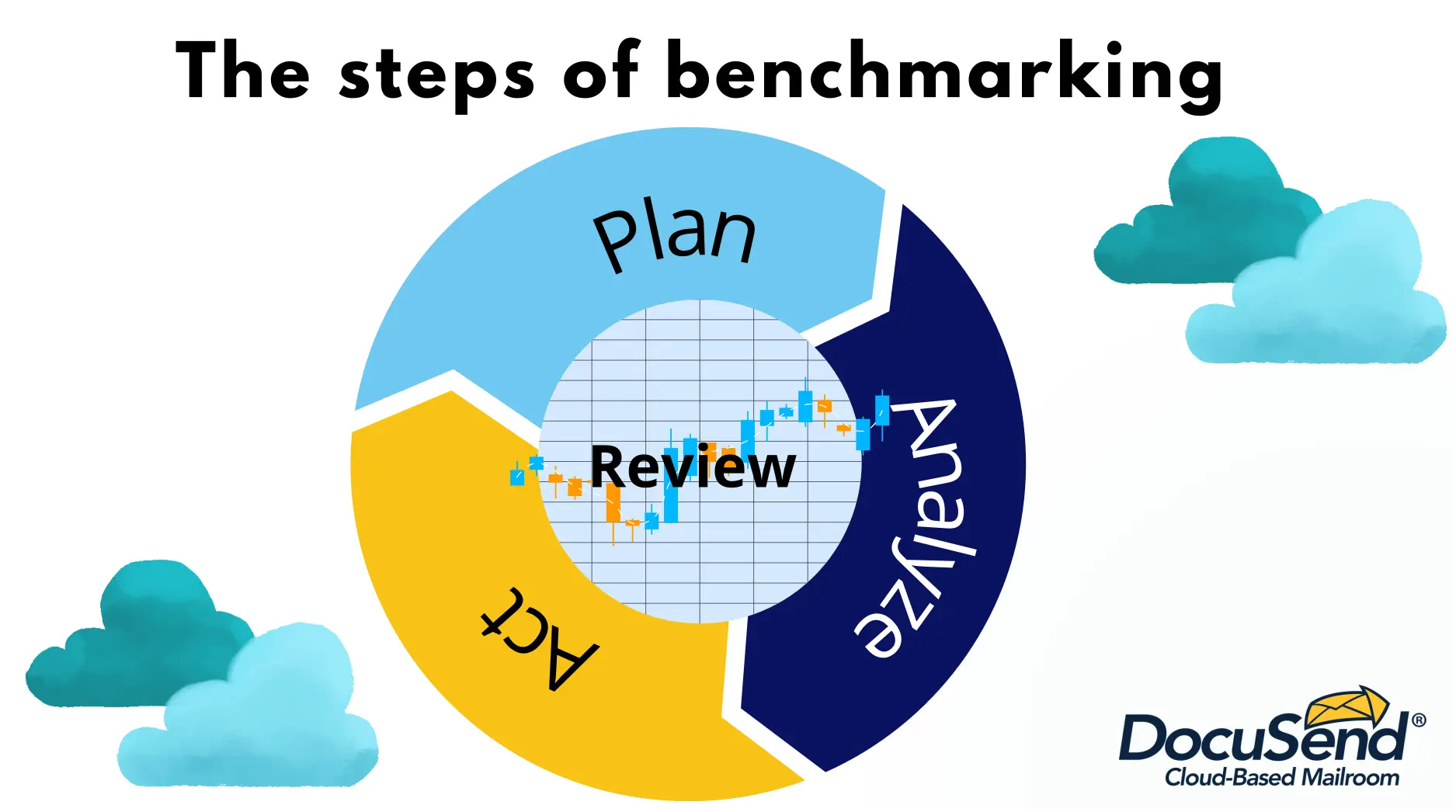Beating the Competition with Benchmarking
Authored by: Nataliia Popova DocuSend.
Probably most of us have heard the idea that when evaluating your achievements, you should only compare yourself with yourself from the past, or with the best version of yourself that you would like to strive for. Despite the popular belief that comparison with someone else or copying others kills uniqueness, things are not the same in business. For a business, there is no shame in comparing yourself with others and copying successful experiences; moreover, it is vital in today's conditions of high competition, at least if your ambition is that your business doesn’t just function, but becomes one of the best in your field.
This article focuses on the method called benchmarking: how business managers can take their company to the next level, innovate, and achieve better results by studying and applying the experience of the best of the best in the same field.
For large companies, benchmarking has long since become a common practice. Constantly investigating business processes and metrics such as prime cost, the time needed for producing the product, service or operation, and sales rates and customer satisfaction compared to the most successful competitors helps you decide how to adjust your own actions and close the gap.
However, many small businesses do not use this research method, even though it helps to define the boundaries for improvement and growth in your niche, giving you a more detailed picture of the hidden options and opportunities for your business and what it can become.
Clear vision
Let's return to the idea of the best version of your business. Without concrete examples as benchmarks, how do you know what is the best version? What are the criteria to take as a guideline when tracking the success of your performance? Without clear guidelines, thinking about growth and development is more abstract. Collecting data and analyzing benchmarks makes your ideas concrete, as it allows you to see where exactly the gap from the benchmark is and develop a clear action plan for what needs to be improved.
In addition, you can save effort, time and money spent on market research and on learning from your own mistakes. After all, the ready experience of others can help you avoid painful pitfalls. Use it as a benchmark for setting standards for your own processes.
Setting goals
All areas that you consider critical to your business can be subjected to comparative analysis. Research can be quantitative, answering the question of how much (cost of processes, time spent, percentage of customer satisfaction). It can also involve studying processes (for example, how a particular task is performed, what materials are used in production, what strategies work, and so on). Set clear goals that you want to reach, for example, how to increase time efficiency, reduce expenses, improve communication with customers, or improve quality. You can compare pricing, design, marketing techniques and strategies, customer service, and even the number of subscribers on companies’ social media. Ultimately, the purpose of the entire study is to improve your financial results by showing you how you can improve your business and earn more profit.
Comparative analysis helps to detect not only limitations but also the potential for competitive advantage. When DocuSend started research on other mail providers, using publicly available information and the experience of customers who have tried different services, we discovered that independence from binding factors—programs to download, contracts, prepayments and minimum volumes—was the gold standard for small business clients. As a result, DocuSend’s team focused on a segment for serving small businesses and was the first to create a service that was previously available only to large businesses with large volumes of mail.
The steps of benchmarking
Prepare a clear route map to improving competitiveness.

- Planning phase
- Analysis of the collected information
- Action
- Review phase
Decide what you would like to improve. Determine a subject of benchmarking according to your priority tasks. Then investigate your own key metrics or operation. Select a relevant business to benchmark. Gather the same information about the competitive company.
Analyze the information. When comparing your performance with a competitor, determine the extent of the gap and try to find the reasons for which it exists. Try to understand why the competitor's work gives better results and what conditions cause this. Picture your company's possible performance assuming that these differences from the benchmark are eliminated.
It’s time to fix the weak points. Determine which solutions can be effective and implement changes. Upgrading existing equipment will help reduce production costs, and more advanced technology can reduce production time and make the product cheaper. Coming up with new ways of motivating staff can lead to a higher average sale amount and higher ratings among customers. Businesses depending on changeable trends, like clothes or kids’ toys, can understand how they perform by tracking sales compared to popular competitors, so they can determine trends and reorient production to match them.
The results are monitored over time to evaluate the effectiveness of the work done.
How to select companies for benchmarking and collect data
Who is the best of the best, whose names are remembered first? When choosing a company whose results inspire you, remember that the analysis will be informative when similar businesses are compared, with a similar target audience or overlapping in some area. If a candidate does not immediately come to mind, you can do a survey of potential customers or acquaintances or ask about the most popular names from people working in a trade or distribution. Find research sites where visitors rate the businesses and services. You can follow social networks and monitor the information they publish. Then gather the data you need. The sources can be news, websites, social media, and conversations with people from other companies. Compare publicly available prices and reviews.
Nobody canceled the uniqueness
Of course, each business has its own unique way of doing things, but by adding to your uniqueness the practices of the most successful companies in the market, you can create a better version of a product or service and rise above the competition, or at least achieve higher results. Benchmarking is effective for already established business processes that just need improvement. If something completely new is envisioned, the only way is to become a pioneer!

